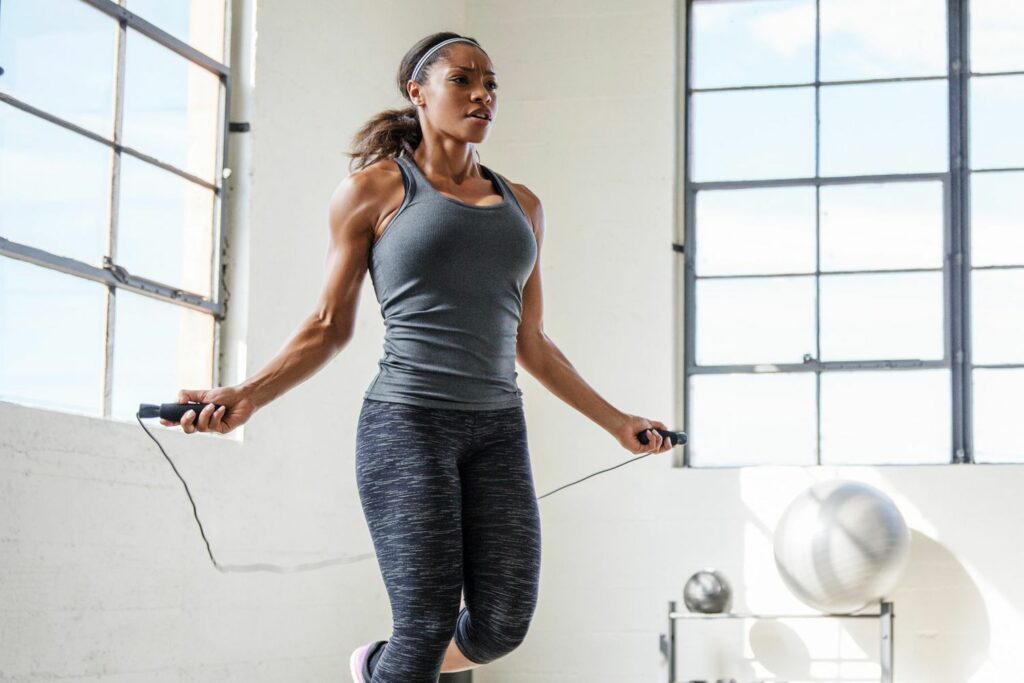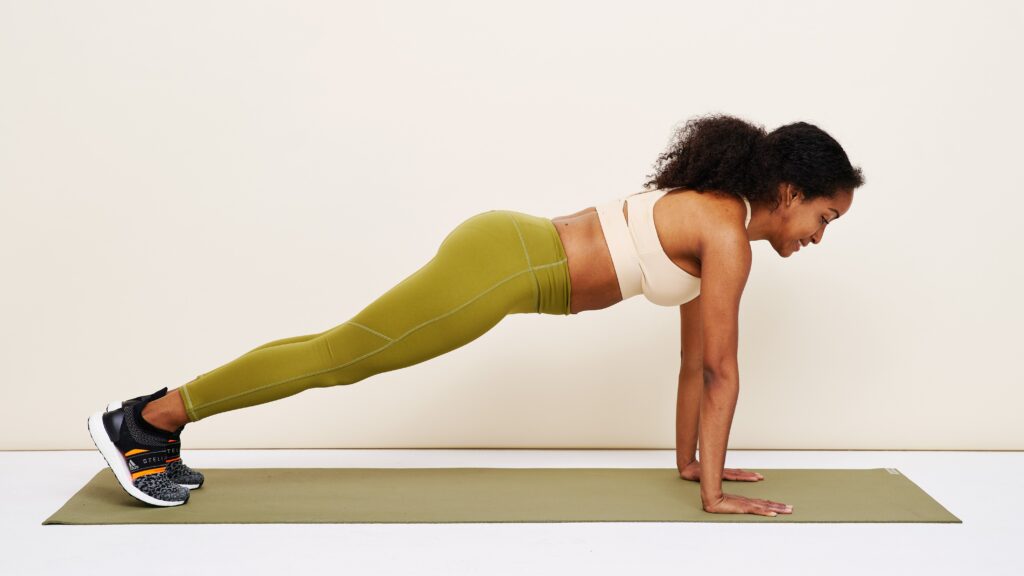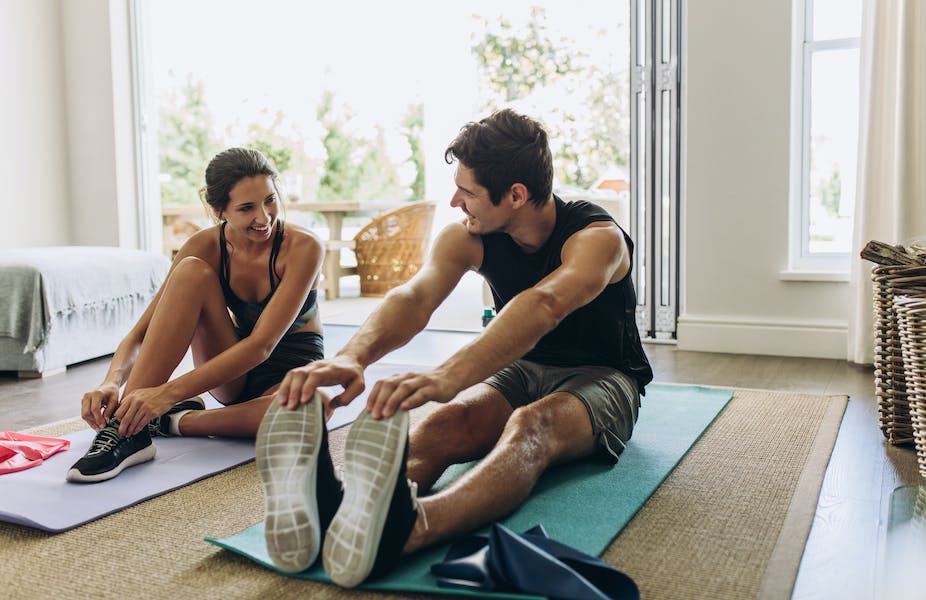Starting a journey of health and fitness from your own living space with our comprehensive guide to crafting an effective workout routine at home. As the appeal of time-flexible and convenient exercise grows, working out at home has taken the fitness world by storm. Our step-by-step guide will assist you in formulating an exercise regimen that aligns with your individual fitness aspirations, be it shedding weight, building muscle, enhancing flexibility, or promoting overall wellness. We’ll discuss the options for workout equipment, the selection of exercises, and the importance of routine consistency to fully capitalize on your at-home training sessions. Stay connected as we help pave your path towards a fitter, healthier lifestyle.
The Appeal of At-Home Workouts
Working out at home has been gaining popularity, and for good reasons. It provides convenience, flexibility, and cost-effectiveness. Home workouts allow you to exercise at any time that suits you best, avoiding the hassle of traveling to and from a gym, not to mention the potential savings on membership fees and time. Moreover, you can enjoy a personalized environment where you feel comfortable and confident, key elements for a successful workout.
The Primary Stage: Define Your Goals
Before designing your at-home workout routine, it’s essential to identify your fitness goals. Are you looking to shed a few pounds, gain muscle mass, enhance flexibility, or simply boost your overall health? Each of these objectives necessitates a different workout approach, with specific types of exercises, intensity, and frequency.
For instance, if your goal is to build muscle, strength training should be the cornerstone of your routine. Conversely, if you aim to improve cardiovascular health or lose weight, you should focus more on aerobic activities.
Equipment or No Equipment?
Next, you should decide whether you want to include equipment in your at-home workout routine. Remember, having a productive workout doesn’t necessarily mean you need to invest in expensive equipment or transform a room into a home gym.
Many effective exercises rely solely on bodyweight, such as push-ups, sit-ups, squats, or yoga poses. However, if you’re looking to diversify your workouts and increase intensity, basic fitness equipment like dumbbells, resistance bands, a yoga mat, or a jump rope can be beneficial and relatively inexpensive.
Creating a Workout Routine at home (6-Steps)
Starting a workout routine at home may seem daunting, but with our 6 step guide, it becomes manageable and fun. This guide simplifies the process, helping you craft a routine that suits your fitness goals and lifestyle. From identifying your goals to choosing exercises, balancing workout types, and maintaining consistency, we’ll walk you through each step. Get ready to kickstart your fitness journey from the comfort of your own home.
1. Warm-Up

Creating an effective workout routine at home begins with the warm-up. Here are some key points:
- Purpose: A warm-up prepares your body for the workout ahead. It increases your heart rate, loosens your joints, and warms up your muscles, reducing the risk of injury.
- Duration: Aim for a 5-10 minute warm-up session before diving into your main workout routine.
- Exercise Choices: Low-intensity cardio exercises like brisk walking, slow jogging, or jumping jacks are ideal. Also, include dynamic stretches that involve movement, such as lunges with a twist, high kicks, or arm circles.
- Intensity: The intensity should be low to moderate. You should feel your heart rate and body temperature slightly increasing, but you should not be out of breath.
- Mental Preparation: Besides physical benefits, a warm-up also sets a positive mindset, gearing you up for a successful workout session.
2. Strength Training

Integrating strength training into your at-home workout routine is key for muscle building and overall fitness. Here’s how you can approach it:
- Goal: Strength training aims to build muscle, increase overall body strength, and improve bone health.
- Duration: Include strength training exercises in your routine at least 2-3 times a week.
- Exercise Selection: Use a combination of bodyweight exercises like push-ups, squats, lunges, or planks. If you have basic equipment, consider dumbbell exercises like bicep curls, chest presses, or resistance band exercises.
- Routine Structure: Aim to work all major muscle groups – legs, hips, back, chest, abdomen, shoulders, and arms. Divide exercises into sets and reps. Start with one set of 10-15 reps and gradually increase.
- Rest and Recovery: Allow at least one full day of rest between strength training workouts for the same muscle group, ensuring sufficient recovery time.
- Progress Tracking: Keep track of your performance and progress over time. As you get stronger, increase the intensity by adding more sets, reps, or weight.
3. Cardiovascular Exercise

Incorporating cardiovascular exercises into your at-home workout routine is essential for heart health, weight management, and endurance. Here’s how to approach it:
- Goal: Cardiovascular exercises aim to increase your heart rate, burn calories, and improve overall aerobic capacity.
- Duration: The American Heart Association recommends at least 150 minutes of moderate-intensity or 75 minutes of high-intensity cardiovascular activity each week.
- Exercise Selection: Include activities like jogging in place, jumping jacks, burpees, or high-intensity interval training (HIIT) routines.
- Intensity: Vary the intensity of your workouts to challenge your body. High-intensity workouts should leave you too breathless to speak more than a few words at a time.
- Progress Monitoring: As your fitness improves, increase the duration, frequency, or intensity of your cardio workouts for continual progress.
4. Flexibility and Balance Exercises

Flexibility and balance exercises are essential for a well-rounded at-home workout routine. Here’s how to incorporate them:
- Goal: These exercises aim to improve your range of motion, enhance body balance, reduce injury risk, and aid muscle recovery.
- Duration: Include flexibility and balance exercises in your routine 2-3 times a week, or even daily for better results.
- Exercise Selection: Yoga, Pilates, and basic stretching exercises are excellent for improving flexibility and balance. Include poses like downward dog, tree pose, and stretches like hamstring and calf stretches.
- Procedure: Hold each stretch for at least 20-30 seconds and avoid bouncing. Balance exercises should be held until you start feeling the strain.
- Mindfulness: Be mindful during these exercises. Breathing deeply and focusing on your body can enhance the benefits and provide a sense of calm.
5. Cool-Down

A proper cool-down is a vital component of an effective at-home workout routine. Here’s how to approach it:
- Goal: The aim of a cool-down is to bring your heart rate and breathing back to normal gradually, and reduce the chance of muscle stiffness.
- Duration: Allocate about 5-10 minutes after your workout session for a proper cool-down.
- Exercise Selection: Include low-intensity activities like slow walking or cycling. Follow up with static stretching exercises targeting all the major muscle groups you worked on.
- Procedure: Each stretch should be held for about 20-30 seconds, ensuring you don’t bounce or force the stretch.
- Importance: A proper cool-down can enhance recovery and prepare your body for your next workout, making it a crucial part of your overall fitness routine.
6. Rest and Recovery

Rest and recovery are integral to any home workout routine, impacting both your performance and the results you see. Here’s what you should keep in mind:
- Importance: Rest days are essential for muscle recovery and rebuilding, as well as preventing overtraining, which can lead to fatigue and injury.
- Duration: Include at least 1-2 rest days per week in your workout schedule, or more depending on your workout intensity and personal recovery needs.
- Active Rest: Active rest days, involving low-intensity exercises like gentle yoga or a leisurely walk, can aid recovery while keeping you active.
- Sleep: Ensure you get enough quality sleep, as it plays a vital role in muscle recovery and performance.
- Nutrition and Hydration: Consuming a balanced diet and staying well-hydrated support recovery, helping your body repair and build muscles efficiently.
Consistency: The Secret to Success
Once you’ve created your at-home workout routine, consistency is key. Regardless of the effectiveness of a workout routine, it won’t yield results if not performed regularly. Making exercise a part of your daily routine and sticking to it is crucial.
Adjusting Your Routine
Over time, you might need to adjust your workout routine. Whether you’re progressing and need more challenging exercises, you’ve hit a plateau, or you’re simply bored, altering your routine can keep you motivated and stimulate further improvements.
Related- Best exercise for wight loss at home.
A Healthy Lifestyle: Complementing Your At-Home Workout
Finally, it’s important to pair your at-home workout routine with a healthy lifestyle. Good nutrition, proper hydration, and adequate sleep are essential elements that work in conjunction with exercise for optimal health.
Building an effective at-home workout routine is achievable and rewarding. It’s about understanding your fitness goals, creating a balanced regimen that includes warm-ups, strength training, cardiovascular exercises, flexibility and balance workouts, and allowing sufficient time for cool-down, rest, and recovery. Consistency is the key to seeing results. Over time, you may need to adjust your routine as you progress, face new challenges, or simply to keep it interesting.
Remember to complement your workouts with a healthy lifestyle, including proper nutrition, hydration, and sleep. The beauty of at-home workouts is the flexibility they offer, allowing you to workout at your pace, on your schedule, and in your space. Stay committed to your routine, and you’ll be on your way to achieving your fitness goals.


